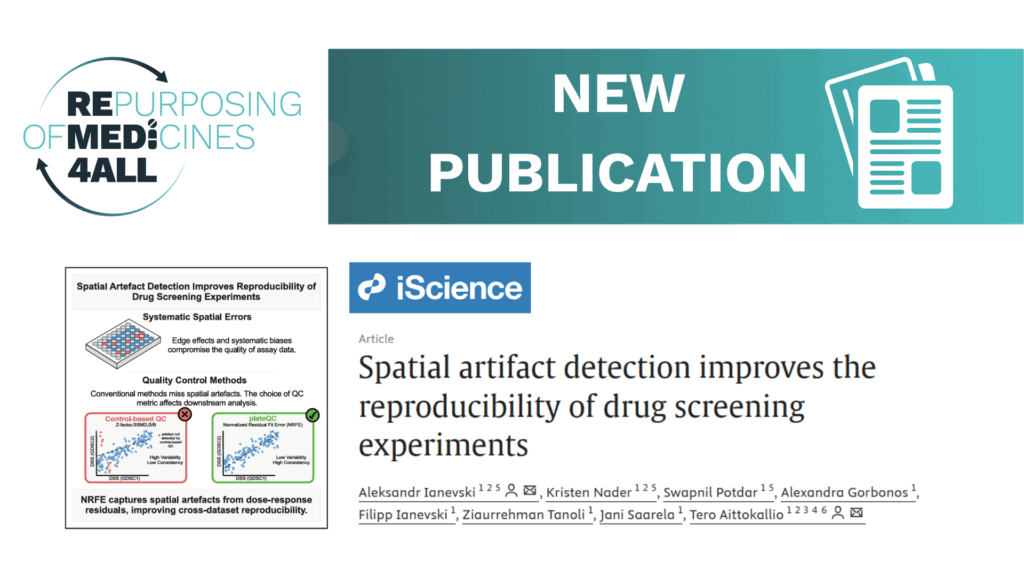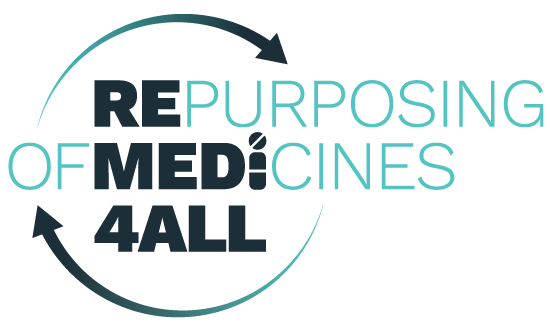
REMEDi4ALL researchers based at the Institute for Molecular Medicine Finland (FIMM) have recently published an article in iScience which explores the importance of identifying spatial artefacts (systematic laboratory errors) in development of new or repurposed drugs. We caught up with corresponding author and researcher at FIMM, Tero Aittokallio to discuss the potential impact of his group’s findings.
A key challenge in phenotypic drug discovery and identification of potential repurposing candidates is the lack of reproducibility in compound screening experiments. Systematic errors in experimental data including those related to location of samples on testing plates can reduce reliability and reproducibility of results. To address this, researchers at FIMM have developed new methods to detect these errors to make drug screening more trustworthy for both researchers and clinicians
What research questions did your recent study address?
Reliable and reproducible drug screening experiments are essential for drug discovery and repurposing. We demonstrated that systematic experimental errors in drug plates can negatively impact data reproducibility, and found that conventional quality control methods based on plate controls often fail to detect these spatial errors.
What innovative methods did your team introduce?
To tackle this limitation, we developed a control-independent quality control approach that uses a metric called normalized residual fit error (NRFE) to identify systematic artefacts in drug screening experiments. We then packaged NRFE and additional Quality Control (QC) metrics into an open-source R-package (PlateQC), providing practical guidelines for integrating these tools into existing drug screening workflows.
What were your most important findings?
The NRFE metric successfully detects systematic spatial artefacts that existing QC methods often miss. When NRFE is integrated with current QC techniques, we see improved cross-study correlation and reliability of screening data. Additionally, plates flagged by NRFE as low-quality show three times higher variability among technical replicates.
How does your research impact drug repurposing efforts?
Many drug repurposing projects rely on phenotypic drug screening in cell lines or patient cells. If these results lack reliability, subsequent studies on repurposing leads have increased risk of failure and wasted resources. The NRFE approach and PlateQC package offer a robust set of tools to strengthen data reliability and consistency, ultimately supporting more successful and efficient translational research and phenotypic drug repurposing.
By focusing on the detection and correction of subtle but significant experimental artefacts, this research marks a major step toward more reproducible and reliable drug screening practices. The open-source PlateQC package and its NRFE metric provide the field with practical, scalable tools helping to align data quality with the urgent demands of drug repurposing initiatives and improving confidence in laboratory results for the entire biomedical community.
This research was published as part of the REMEDi4ALL initiative, a Horizon Europe-funded project creating a platform for patient-centric drug repurposing across Europe and beyond. REMEDi4ALL drives innovation across the entire drug repurposing pipeline, providing the infrastructure and standards needed to boost translational research and deliver more effective therapies to patients faster.
- Read the paper here.


